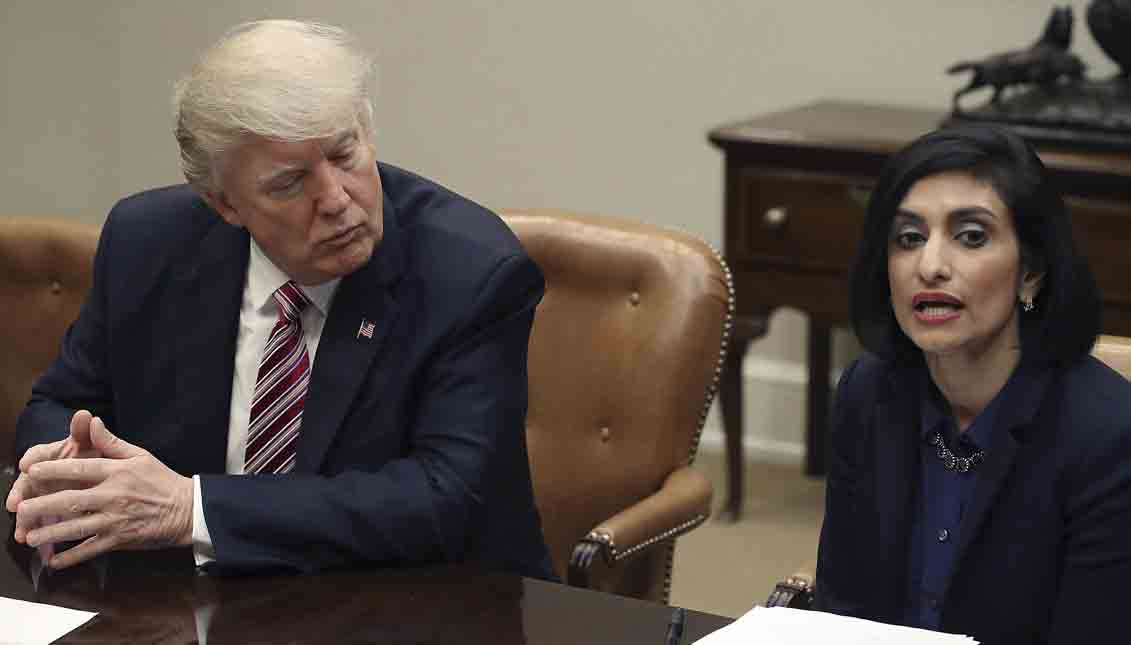
[OP-ED]: The national slush fund
MORE IN THIS SECTION
After all, it isn’t every day that the White House proposes deep cuts in agency spending: for 2018, the Environmental Protection Agency would be down 31 percent; the State Department, 29 percent; the Department of Education, 14 percent; and the Department of Transportation, 13 percent.
Outrageous, screamed critics. Good programs are being gutted. Surely true. But some ineffective or unimportant programs would also be gutted. The reflexive horror from Congress and (yes) the media to spending cuts reveals a central cause of chronic budget deficits. There’s a bipartisan unwillingness to answer this question: What is government for?
Once upon a time, before World War II, there was a strong consensus for limited government. In 1929, federal spending was 3 percent of gross domestic product; now it is 21 percent. Pay-as-you-go finance also enjoyed broad support. If more government was needed, it had to be covered by higher tax revenues. There was an “unwritten fiscal constitution,” writes Bill White in his book, “America’s Fiscal Constitution.”
According to White, the government traditionally borrowed for only one of four reasons: war, starting with 1812; depression, starting with the Panic of 1819; geographic expansion (Jefferson’s Louisiana Purchase); and preserving the union (the assumption of state debts after the Revolution). “For almost two centuries the president and Congress never planned to incur debt,” White writes, “simply to reduce taxes or to pay for routine annual spending.”
This gradually changed after World War II. The crucial break occurred in the early 1960s when President Kennedy accepted the advice of his economists that tax cuts would spur economic growth, although the budget was already in deficit. The assumption was that continuous strong economic growth would generate the higher tax revenues to pay for new programs.
We went from limited to open-ended government. Any group that could garner the votes got federal aid. Government operated a railroad (Amtrak), promoted “public” TV, subsidized farmers and much more. Spending discipline eroded. The trouble was that the central assumption -- that rapid economic growth would automatically finance new government programs -- was overoptimistic.
No matter. Consider the contrast between the last half of the 19th and 20th centuries. After Kennedy’s conversion, the federal government ran deficits in every year from 1963 to 1997, except for one (1969). After the Civil War, the response was much different. The debt was a then-staggering $2.7 billion. White reports that the government ran surpluses in every year from 1866 to 1893.
We should revert to the budget’s role as an exercise in political choice, not an instrument of economic policy. That doesn’t mean ignoring economics and trying futilely to balance the budget during recessions. The late economist Herbert Stein argued that when the economy nears “full employment,” the budget should near balance. This remains a good rule of thumb. Well, with the economy near full employment, the deficit exceeds $500 billion.
We need limited government not in the sense of smaller government -- that’s impossible -- but in the sense of government that is focused and reflects agreed-upon boundaries. What jobs must government do? Who deserves benefits and why?
The standard Washington narrative blames Republicans for the budget stalemate because they reject higher taxes. This is a half-truth. Democrats have stymied candid discussion by ruling out cuts in benefits for Social Security, Medicare and Medicaid. These programs constitute more than half of present federal spending and two-thirds of growth through 2027, projects the Congressional Budget Office. Putting them off limits squeezes other programs, as Trump’s budget makes clear.
RELATED CONTENT
Trump has offered some good and bad choices; but at least he has offered choices. We need to go further. Here’s what we should do.
First, determine how much we need to spend on defense. (At 15 percent of the budget, it’s too little now, in my view.)
Second, begin trimming programs for the elderly by gradually cutting benefits for the affluent and raising eligibility ages. Preserve most, though not all, of the safety net.
Third, eliminate -- again gradually -- marginal or ineffective programs, from Amtrak to farm subsidies to broadcasting grants. These cuts might not shrink government but would liberate funds for more important programs, such as research and defense.
Fourth, find a new tax (my candidate: a carbon tax) whose slow increase would close the considerable remaining deficits after spending cuts and increases.
The odds that Congress would pass anything like this are negligible. We have used government as a massive slush fund for whatever cause or interest seems popular. The carelessness is now woven into the social and political fabric. We need a leader who can shift public opinion and reconcile Americans to the need for choices, many unpopular. That person is nowhere in sight.







LEAVE A COMMENT:
Join the discussion! Leave a comment.